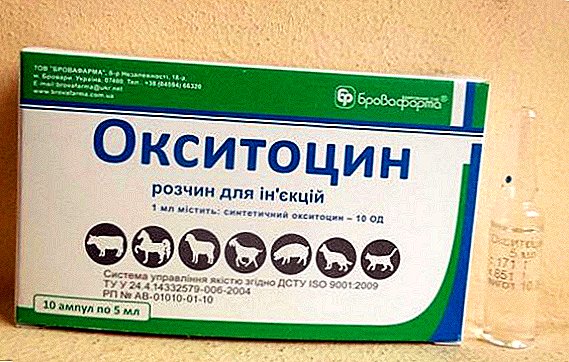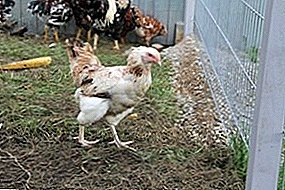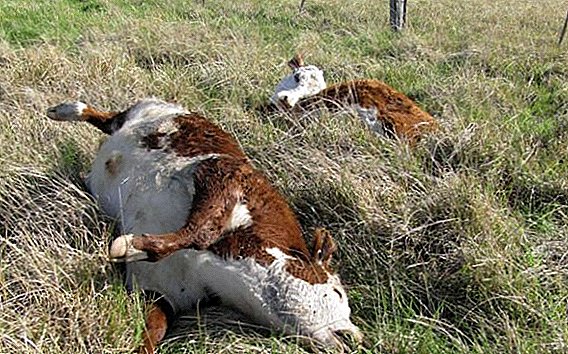 Plague is perhaps one of the most famous diseases that all of humanity knows about, because during its existence it has experienced more than one epidemic that claimed millions of human and animal lives. It will be about the plague that affects cattle.
Plague is perhaps one of the most famous diseases that all of humanity knows about, because during its existence it has experienced more than one epidemic that claimed millions of human and animal lives. It will be about the plague that affects cattle.
Fortunately, the causative agent provoking it is not dangerous to humans, but this ailment can cause serious damage to the economy, therefore, for any of its manifestations or for the defeat of the cattle causative agent, you should know what to do in such cases. From the article you will learn how to recognize the symptoms of plague, what measures to take to combat, and how to protect the economy from it.
What is this disease
Plague cattle is called an infectious disease, which is characterized by a severe course, high contagion and mortality. It develops rapidly, according to the focal principle, can affect many species of animals. The most susceptible are cattle, buffalo, zebu, rabbits, dogs. For humans, the plague, which affects cattle, is not dangerous, but it is impossible to eat the meat and milk of sick animals.  Earlier, mortality from the disease reached 95-100%. Since the identification of the causative agent, and until 2014, the active control of the disease has been conducted, thanks to which it is not found today in 198 countries.
Earlier, mortality from the disease reached 95-100%. Since the identification of the causative agent, and until 2014, the active control of the disease has been conducted, thanks to which it is not found today in 198 countries.
Did you know? Intestines in representatives of cattle have a length 22 times the length of their body.
Pathogen, sources and routes of infection
The causative agent of plague in cattle is an RNA-containing virus from the genus Morbillivirus, discovered in 1902. The virus dies when exposed to a temperature of +60 degrees for 20 minutes, at a temperature of 100 degrees - instantly. It lasts 5-6 days in room conditions, at 4 ° C - for several weeks. Perishes under the influence of alkali, acid, at disinfection.
Infection of animals occurs from sick individuals, corpses. The pathogen is transmitted through the air, through the conjunctiva, mouth. Sources of infection can be water, food, equipment.  Plague bacillus and the plague virus of cattle under the microscope From the moment the virus enters the livestock organism to the onset of the first symptoms, it takes from 3 to 17 days. Death occurs within 7-9 days. Sick animals acquire immunity from the plague for up to 5 years, however, they retain and secrete the virus for 4 months, infecting healthy individuals.
Plague bacillus and the plague virus of cattle under the microscope From the moment the virus enters the livestock organism to the onset of the first symptoms, it takes from 3 to 17 days. Death occurs within 7-9 days. Sick animals acquire immunity from the plague for up to 5 years, however, they retain and secrete the virus for 4 months, infecting healthy individuals.
Penetrating into the blood, the virus spreads throughout the body and is deposited in the lymph nodes, bone marrow, respiratory organs, stomach, leading to disruption of the immune system.
Important! The plague virus remains in fresh meat for 4-6 hours, in frozen and salted - 28 days. In the soil and the corpse of an animal, it is viable for 30 hours.
Symptoms and course of the disease
Symptoms of cattle plague may vary depending on the form of the disease. They will be different for acute, subacute and over-acute forms. The disease can occur with typical symptoms, without severe symptoms (latent) or abortive, i.e. with a quick recovery, without going through all the stages of development.
Sharp
For the acute course of the disease, the following symptoms are characteristic:
- a sharp rise in temperature to 41-42 degrees;
- agitation;
- teeth grinding;
- ruffled coat;
- loss of wool luster;
- inflammatory changes in the mucous membranes of the eyes, nose and mouth;
- excessive salivation;
- ulcers on the oral mucosa;
- conjunctivitis;
- runny nose;
- serous and purulent-serous vaginitis;
- violations of the digestive tract (diarrhea mixed with blood);
- weight loss.

Subacute
In subacute plague, the symptoms are blurred. Such a course of the disease, as a rule, is characteristic of unfavorable zones, in which outbreaks of the disease have already been observed, and where the cattle have residual immunity. In such areas, animals usually do not have lesions of the mucous membranes, and short-term diarrhea is present. Most often, the disease ends in recovery. Only young individuals or those with weak immunity die. The disease can take 2-3 weeks or longer.
Did you know? The largest cow, which fell on the pages of the Guinness Book of Records, was 1.9 meters tall at the withers, and the smallest one was only 80 cm above the ground.
Super sharp
Hypertensive course of the disease is rare. At this stage, the illness proceeds rapidly, and the animals die within 2-3 days. 
Laboratory diagnosis
The diagnosis of "plague" is made during the examination of the animal by a veterinarian on the basis of characteristic symptoms and a blood test, immunoassay, PCR diagnosis and other bacteriological tests.
Read about the causes, symptoms and treatment of such infectious diseases of cattle: endometritis, brucellosis, leptospirosis, actinomycosis, rabies.
The highest concentration of the virus in the body is observed during the period of erosion on the mucous membranes and the maximum increase in body temperature, therefore, the most accurate are the tests that were taken during these periods. Tests of blood, tissues from erosions and superficial lymph nodes are taken. Detection of the virus in the materials carried out by research institutes or zonal specialized veterinary laboratories.
Methods of struggle and quarantine
Veterinary legislation prohibits the treatment of cattle that become sick with plague. All infected animals are subject to slaughter as soon as possible. They are killed by the bloodless method, after which the corpses are disposed of by burning. Infected milk is boiled for half an hour, and then recycled. The premises in which the sick cattle were kept and killed are disinfected.  Alkaline and acidic 1-2% solutions are used for disinfection - bleaching powder, sodium hypochlorite, caustic sodium, formaldehyde. When processing these funds, the virus dies after a few minutes.
Alkaline and acidic 1-2% solutions are used for disinfection - bleaching powder, sodium hypochlorite, caustic sodium, formaldehyde. When processing these funds, the virus dies after a few minutes.
In the household where the disease is detected, quarantine is declared, which is removed 21 days after the last case was registered. It is prohibited to export any products of animal origin from the place where quarantine is declared. Animals are kept there in a separate way, the premises are disinfected daily.
Important! All healthy animals that are on the farm where an outbreak of plague is detected should be vaccinated and their body temperature monitored daily..After removing the quarantine, animals are vaccinated every year for the next 3 years.
Prevention
Since the cure of the plague is impossible, it is important not to allow the virus into your household. To do this, follow certain preventive measures:
- vaccinate animals with live culture vaccine and inactivated saponin vaccines;
- place the newly arrived animals in quarantine for 2 weeks;
- regularly disinfect the premises where livestock are kept;
- to limit the movement of cattle.
 Thus, the plague is a serious viral infectious disease of cattle, which is not treatable and is characterized by the highest mortality rate. Despite the fact that in 2014, it was announced in the world that the disease had won, in some countries, mostly underdeveloped, and today it is found.
Thus, the plague is a serious viral infectious disease of cattle, which is not treatable and is characterized by the highest mortality rate. Despite the fact that in 2014, it was announced in the world that the disease had won, in some countries, mostly underdeveloped, and today it is found.
Vaccination will help to avoid brucellosis, foot and mouth disease and other dangerous diseases of cattle.
Therefore, it is important to know the symptoms of plague, to vaccinate and to comply with other preventive measures to save livestock from penetrating the virus into its body.












